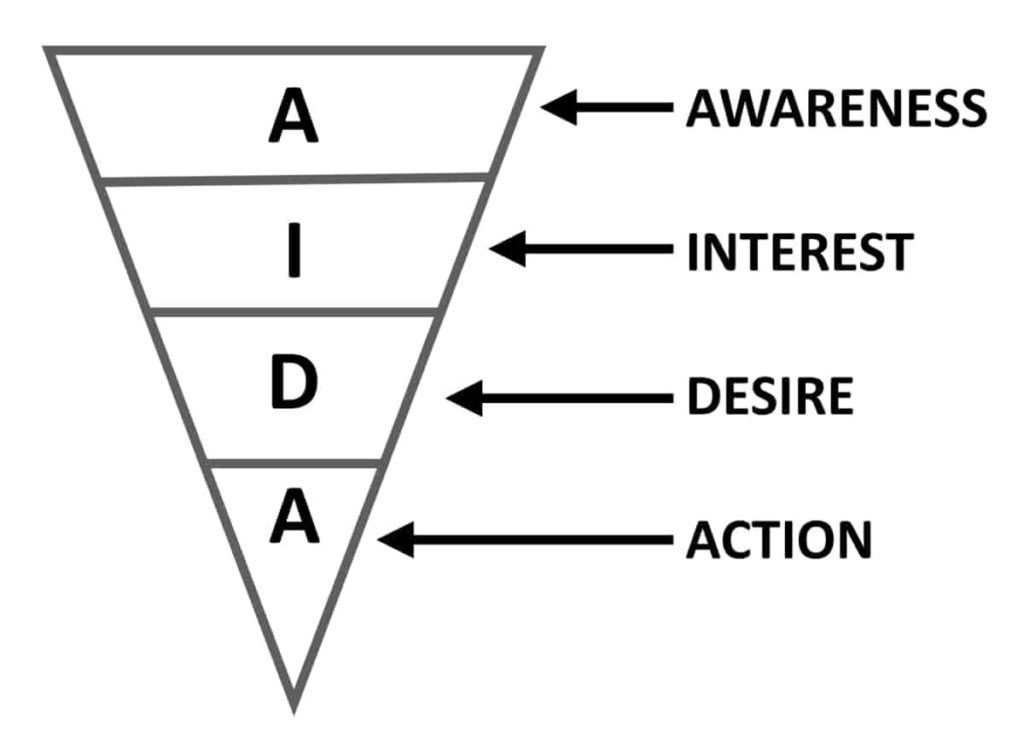Digital marketing has changed the way that many consumers discover, interact, and purchase from businesses. But it has also posed a new challenge for business owners – either keep up or get left behind.
This guide will ensure you can effectively market your products and services in today’s world of digital marketing. We rounded up the 17 most important marketing models that are worth following, implementing, and adapting for your business.
What Is A Marketing Model?
A marketing model is a framework that marketing professionals use to guide their promotional efforts. They can be used to help make decisions about everything from product development and pricing to marketing mix and communications strategy. Marketing models help businesses identify their current positioning, analyze their strengths and weaknesses relative to competitors, and understand how to best reach their target audience.
Although there are dozens of models out there, many of them are outdated and no longer relevant in an increasingly online marketplace. But don’t worry – this article identifies the 17 marketing models that every business owner and marketer should know.
17 Most Important Marketing Models
7 P’s Marketing Mix
The 7 P’s of marketing are Product, Price, Place, Promotion, People, Process, and Physical evidence. Originally developed in the 1960s, this marketing framework is still used by marketing professionals today.
The 7 P’s can help businesses audit their marketing strategy and identify any areas that need improvement. Business owners can analyze each “P” one by one and consider how they provide value in each aspect. Then, they can look at competitors and industry leaders for inspiration on how to better serve customers.
AIDA
AIDA stands for Awareness, Interest, Desire, and Action. The AIDA model teaches marketers the most effective way to nurture prospective customers.

To start, raise high-level awareness about a relevant issue or problem. Next, create interest by explaining how the product or service solves this problem. Then, generate desire by demonstrating how the audience will feel after using this helpful solution. Finally, close the lead and encourage them to take action by visiting the website, signing up for a consultation, or purchasing from the business.
Ansoff Matrix
The Ansoff Matrix is a simple marketing tool that helps businesses plan their growth strategy. The matrix consists of four quadrants separated by two axes: Markets (new versus existing), and Product (new versus existing).
Businesses with existing product offerings in an existing market face a market penetration challenge. To grow, they must win market share from competitors. On the other hand, businesses looking to enter a new market with an existing product need a market development strategy. They have to advertise to new audiences and educate potential customers about their offering.
Product development is necessary when a business wants to enter an existing market with a new product. To succeed, they must create a product worthy of market attention and differentiate themselves from competitors. Finally, businesses with new products in new markets are engaging in a diversification strategy. This is the most challenging growth option, as there is often little customer awareness or understanding of the new product.
Brand Positioning Map
To map the brand positioning of a business relative to competitors, begin by creating a 2-by-2 matrix. The vertical axis will range from low price to high price, and the horizontal axis will range from low quality to high quality.
After drawing the axes, plot the business and other brands in the industry on the matrix. The result is a bird’s eye view of the market landscape. From here, businesses can visualize how they differ and develop a sense of how customers perceive them.
Customer Lifetime Value
Customer lifetime value is a marketing metric that estimates the present value of a new customer, based on their expected lifetime spend. Knowing this number is essential for anyone who sells products or services on social media, or other paid channels.
To devise an effective digital marketing plan, you must first understand what you can afford to pay for a customer and still turn a profit. While this is a hard and fast calculation, rather than a subjective analysis, it is still a highly important model that business owners need to know.
Growth-Share Matrix
The Growth Share Matrix is yet another marketing model represented by a 2-by-2 matrix. In this case, it is divided up by market growth rate and relative market share. In the bottom right-hand corner, we have dogs – business segments with low growth rates and low market share (sorry, dog lovers). On the bottom left are cash cows – products with high market share in slow-growing markets.
On the top, we have stars and question marks. Stars are products with high market share in fast-growing markets. Whereas question marks are lines of business with low relative market share in a market with high growth. This matrix was developed by BCG consultants and aims to help businesses decide where to allocate digital marketing resources.
Loyalty Ladder
A Loyalty Ladder describes how customers evolve over time, from first becoming aware of a product or service, to eventually becoming brand advocates. This model is represented by a multi-rung ladder, with each rung representing a different stage in the customer journey.
The Loyalty Ladder model is important to consider when forming a marketing plan because it emphasizes the importance of nurturing customers and continuing to move them up the ladder. Rather than only acquiring new customers, which is becoming increasingly costly, this model focuses on creating marketing touchpoints at each stage.
McKinsey 7S Model
The McKinsey 7S Model is used to determine a company’s strengths and weaknesses. The model consists of seven factors: Strategy, Structure, Systems, Shared values, Style, Staff, and Skills. The first three factors are the hard S’s, which can be easily defined and managed from the top down. The final four, however, are the soft S’s. These factors are often more challenging to control, especially during periods of growth.

The McKinsey Model can be used to audit a company’s marketing strategy. By analyzing each of the seven factors, businesses can identify areas that need improvement. For example, a business may need to develop new systems to support a growing marketing team. Or, they may need to instill shared values among employees to create a more cohesive culture.
PEST Analysis
Perform a PEST analysis to identify any external factors that could impact your marketing strategy. This marketing model looks at Political, Economic, Social, and Technological risks that fall outside of your control.
This acronym is sometimes extended to PESTLE, which includes Legal and Environmental factors as well. By understanding the external environment, businesses can make more informed decisions about marketing activities and better anticipate change.
Porter’s Five Forces
Porter’s Five Forces, a concept created by Harvard Business School professor Michael Porter, are used to evaluate the relative attractiveness of an industry. The forces include competitive rivalry, supplier power, buyer power, threat of substitution, and threat of new entry.
Porter’s Five Forces can help businesses understand their competitive landscape and make informed decisions about how to enter or grow within that industry. This analysis is often performed before completing an acquisition or large investment, as it can help assess the potential risks and rewards.
SOSTAC Model
P.R. Smith developed the SOSTAC planning system to help marketers formulate growth strategies. SOSTAC stands for Situation, Objectives, Strategy, Tactics, Action, and Control.
The SOSTAC planning methodology helps companies reflect on where they are today, where they want to be, and how they can there. The simple, easy-to-remember approach can be used for marketing campaigns, product development, and long-term business goals.
Product Life Cycle Model
The Product Life Cycle Model breaks product sales into four distinct categories: introduction, growth, maturity, and decline. This pattern spans the time from initial product launch to eventual obsolescence.
The Product Life Cycle Model can help recognize, predict, and plan for changes in customer demand. It is often used to determine marketing strategies, such as when to introduce new products or how to reposition existing ones. Relatedly, this analysis can help businesses use advertising strategies that target different stages of the product life cycle.
STP Marketing Models
The STP Marketing Model focuses on three primary strategies: Segmentation, Targeting, and Positioning. Created by Phillip Kotler of Northwestern, this model helps businesses determine how to market their products or services in a competitive environment.
Segmentation: Separate the market into a handful of customer segments that require different marketing messages
Targeting: Select the most promising segments and develop marketing strategies to reach them
Positioning: Differentiate the product or service from competitors in the space
SWOT Analysis vs. TOWS Analysis
Both of these popular marketing models are acronyms that stand for Strengths, Weaknesses, Opportunities, and Threats. Like many other models, this analysis is typically performed on a 2-by-2 matrix.

In a SWOT analysis, each quadrant is filled out with a focus on the internal environment and what can be easily controlled, pivoted, or avoided. In a TOWS analysis, on the other hand, the focus is on the external environment and what risks can only be mitigated.
The RACE Model
RACE stands for Reach, Act, Convert, and Engage. The RACE model is a helpful tool for marketing teams as it provides a framework for thinking about the various touchpoints that exist along the customer’s journey.
The model begins with reach, or the process of raising awareness and getting found by potential customers. Once a business has captured the attention of its target audience, it needs to take action and convert them into leads. Finally, the company must engage with customers to build relationships and turn them into lifelong fans and repeat buyers.
ToFu, MoFu, and BoFu
These three marketing models refer to stages in a traditional marketing funnel. ToFu, or top of the funnel, refers to prospective customers who are in the earliest stages of awareness and discovery. MoFu, or middle of the funnel, is the stage when customers begin to understand your product and are evaluating options. BoFu, or bottom of the funnel, consists of customers who are ready to buy or who have already purchased from your brand.
Many marketing teams focus their efforts on ToFu or MoFu activities, such as SEO lead generation and conversion rate optimization. However, it’s important to consider the entire funnel when developing growth strategies.
USP
USP, or Unique Selling Proposition, is a concise explanation of a business’ key differentiating factor. This could be a product feature, a benefit, or anything else that sets the company apart from competitors.
Think of a unique selling proposition as something that customers value and your business does well, but other companies come up short on. This USP should be used to guide marketing efforts and inform product development.
Final Thoughts
There you have it – a comprehensive guide on marketing models to help you understand the different frameworks available. As you can see, each model has its own strengths and weaknesses. Some popular marketing models help businesses look inward to assess their marketing strategy while others focus on the competitive landscape.
As you determine the most effective approaches to marketing for your business, keep these digital marketing models in mind. They will help you identify key areas of focus and make better decisions about where to allocate your marketing budget.
Marketing Model FAQs
The main marketing models include the 7 Ps Marketing Mix, AIDA, Porter’s Five Forces, USP, and the brand positioning map. These models all help businesses articulate their competitive advantages and learn to communicate them to customers.
The four Ps of marketing originally included product, promotion, price, and place. This marketing model was developed with product, rather than service-based, marketing in mind. Eventually, people, processes, and physical evidence were added to create the 7 Ps of marketing and better incorporate the role of digital customer service in creating brand loyalty.
The four Cs of marketing are consumer, cost, convenience, and communication. These pillars of marketing were proposed to replace the 4 Ps by Bob Lauterborn. Instead of focusing on product sales, the 4 Cs are meant to emphasize building lasting customer relationships.



